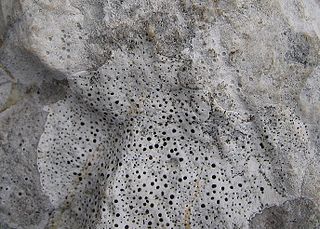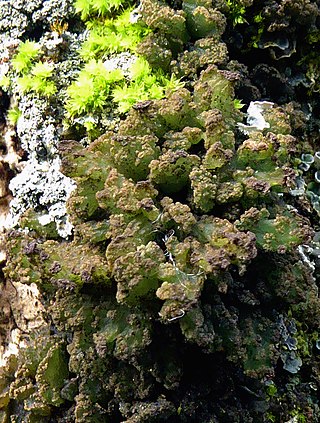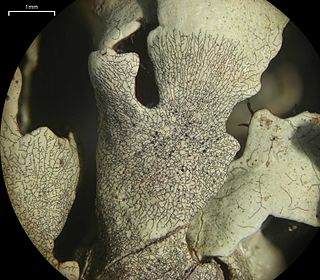
The Hypocreales are an order of fungi within the class Sordariomycetes. In 2008, it was estimated that it contained some 237 genera, and 2647 species in seven families. Since then, a considerable number of further taxa have been identified, including an additional family, the Stachybotryaceae. Wijayawardene et al. in 2020 added more families and genera to the order. According to the Catalog of Life, As of April 2021 the Hypocreales contains 6 families, 137 genera, and 1411 species. Hyde et al. (2020a) listed 14 families under Hypocreales, while, Wijayawardene et al. (2022) accepted 15 families in the order, where Cylindriaceae was additionally added. Earlier, Hyde et al. (2020a) had placed Cylindriaceae in class Xylariomycetidae. Samarakoon et al. (2022) agreed. Hence, Cylindriaceae should have been excluded from Hypocreales and placed in Xylariomycetidae. Xiao et al. (2022) recently introduced a new family Polycephalomycetaceae to Hypocreales.

The Pucciniaceae are a family of rust fungi that cause plant diseases, mainly on cereals such as wheat. The family contains over 4900 species: many of them in the type genus Puccinia.

Capnodiales is a diverse order of Dothideomycetes, initially based on the family Capnodiaceae, also known as sooty mold fungi. Sooty molds grow as epiphytes, forming masses of black cells on plant leaves and are often associated with the honeydew secreted by insects feeding on plant sap. This diverse order has been expanded by the addition of several families formerly thought unrelated and now also includes saprobes, endophytes, plant pathogens, lichens and rock-inhabiting fungi. The new additions include the genus Mycosphaerella containing the causal agents of several economically important crop and tree diseases. A small number of these fungi are also able to parasitise humans and animals, including species able to colonise human hair shafts.

The Botryosphaeriales are an order of sac fungi (Ascomycetes), placed under class Dothideomycetes. Some species are parasites, causing leaf spot, plant rot, die-back or cankers, but they can also be saprophytes or endophytes. They occur world-wide on many hosts. For example, in China, infections related to Botryosphaeriales have been recorded on numerous hosts such as grapes, Caragana arborescens,Cercis chinensis, Eucalyptus, Chinese hackberry, blueberry, forest trees, and various other woody hosts.

Dothideales are an order of bitunicate fungi consisting mainly of saprobic or plant parasitic species.
The Massariaceae are a family of fungi in the order Pleosporales. It contains 3 genera and 33 species. Taxa in the family have a cosmopolitan distribution, but are better known in more temperate zones. Although the family is poorly known, it has been suggested that they are saprobic in wood and bark, with a few species being weak pathogens.

The Pertusariales are an order of fungi in the class Lecanoromycetes. It contains the following families: Coccotremataceae, Icmadophilaceae, Megasporaceae, Microcaliciaceae, Ochrolechiaceae, Pertusariaceae, Varicellariaceae, and Variolariaceae. Many of these fungi form lichens.

The Gyalectaceae are a family of fungi in the order Gyalectales.

Verrucariales is an order of ascomycetous fungi within the subclass Chaetothyriomycetidae of the class Eurotiomycetes. Although most of the Verrucariales are lichenised, the family Sarcopyreniaceae consists of 11 species of lichenicolous (lichen-dwelling) fungi.

The Pyrenulales are an order of ascomycetous fungi within the class Eurotiomycetes and within the subphylum Pezizomycotina.
Polistroma is a genus of lichenized fungi in the family Graphidaceae. This is a monotypic genus, containing the single species Polistroma fernandezii.
The Parodiellaceae are a family of fungi with an uncertain taxonomic placement in the class Dothideomycetes. It contains the single genus Parodiella, which has four species.
Antimanoa is a fungal genus in the division Ascomycota. The relationship of this taxon to other taxa within the division is unknown, and it has not yet been placed with certainty into any class, order, or family. This is a monotypic genus, containing the single species Antimanoa grisleae, originally collected from Venezuela. The genus and species were described as new to science in 1930 by German mycologist Hans Sydow.
The Cephalothecaceae are a family of fungi in the class Sordariomycetes. The family was circumscribed in 1917 by Austrian naturalist Franz Xaver Rudolf von Höhnel. Species in this family are saprobic, often growing on rotten wood or on other fungi. They are known to be distributed in northern temperate regions. The family was placed in a monotypic class CephalothecalesHubka & Réblová in Index Fungorum 424: 1 (2019).

The Arctomiaceae are a family of lichenized fungi in the Ascomycota, class Baeomycetales. The family was named by Theodor Magnus Fries in 1861, with Arctomia as the type genus. Species in this family are found in arctic and subarctic habitats, usually associated with bryophytes.
Wegea is a genus of fungi within the order Arthoniales. The genus has not been placed into a family. This is a monotypic genus, containing the single species Wegea tylophorelloides. The genus was circumscribed in 1997 by André Aptroot and Leif Tibell. The species have a morphology similar to calicioid fungi but does not form a mazaedium.
Hyaloraphidium is a genus of chytrid-like fungi. It is the only member of the family Hyaloraphidiaceae, order Hyaloraphidiales and class Hyaloraphidiomycetes in the division Monoblepharomycota.

Lichenostigmatales is an order of fungi in the class Arthoniomycetes. It contains the single family Phaeococcomycetaceae. Lichenostigmatales was circumscribed in 2014 by Damien Ertz, Paul Diederich, and James D. Lawrey, with genus Lichenostigma assigned as the type. Using molecular phylogenetics, they identified a lineage of taxa in the Arthoniomycetes that were phylogenetically distinct from the order Arthoniales. Species in the Lichenostigmatales include black yeasts, lichenicolous, and melanised rock-inhabiting species.
Collemopsidiales is an order of fungi in the class Dothideomycetes. First circumscribed by Sergio Pérez-Ortega, Isaac Garrido-Benavent and Martin Grube in 2016, it contains a single family, Xanthopyreniaceae.
Baidera is a single-species fungal genus in the family Roccellaceae. It contains the species Baidera mauritiana, a corticolous (bark-dwelling), crustose lichen found in Mauritius. Both the genus and species were described as new to science in 2020 by Paul Diederich and Damien Ernst.










